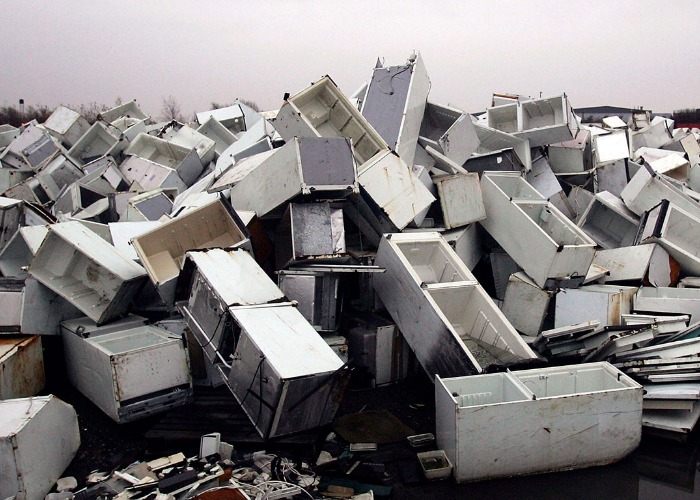How to get rid of your old appliances without costing the earth

Buying new household electricals? Here's why it's more important than ever to dispose of the old ones correctly…
From fridges to app-controlled lighting and milk frothers to mobiles our homes are jam-packed with more smart gadgets and technology than ever before.
But while time-saving household gizmos can make life easier, not to mention more entertaining, the boom in electricals has some big unwanted side effects.
What happens for example when your washing machine comes to the end of its useful life or that games console the kids’ nagged for is out of date?
An epidemic of electrical waste
It is estimated the UK currently contributes one million tonnes of electrical waste, known as ‘e-waste’ every year, with most of it coming from large household appliances such as washing machines and fridges.
According to the Global E-Waste Monitor 2017 the amount of e-waste generated worldwide is expected to increase substantially over the next few years with 52.2 million metric tonnes generated by 2021.
Rates of e-waste are set to rise over the next few years posing a “significant risk” to environmental and human health, according to a global report
READ MORE: Is flying-tipping lowering the value of your home?
A worldwide problem
E-waste refers to all items of electrical and electronic equipment (EEE) and its components that have been disposed of with no attempt to recycle. It's a trend that is on the rise due to the increasing emergence of new technologies that deem existing products out of date.
The Global E-Waste Monitor 2017 report warns increasing levels of electronic waste combined with unsafe disposal through fly-tipping and open burning, poses a significant risk to the environment and human health.
Figures from 2016 show just 20% of all e-waste generated across the world is properly collected and recycled, despite the fact that much of it contains valuable metals, plastics and other materials that could be reused in new products.
Washing machines are the biggest offenders
OnRecycle.co.uk has studied government data for Waste Electrical and Electronic Equipment (WEEE) and found that large domestic appliances such as washing machines accounted for the most e-waste generated by UK households.
Other items that create large amounts of e-waste include fridges and freezers, laptops and computer screens, landline telephones and satellite dishes and even small items such as headphones.
 Infographic courtesy of OnRecycle
Infographic courtesy of OnRecycle
“One of the key hazards of e-waste is its electronic components, which often contain toxins, such as lead, cadmium and mercury," says Cas Paton, managing director of OnRecycle. "For this reason, e-waste must be handled with the utmost care. This includes an appropriate method of recycling, refurbishment or disposal. But since most types of e-waste can be recycled effectively, it is not necessary to leave unwanted, electronic waste to gather dust in a dump."
How to recycle old appliances without costing the earth
1. Local council
If you have an old washing machine, fridge or freezer you need to get rid of then you can pay a small fee to your local council to collect for recycling. Find out about services in your area here.
2. Appliances Direct
Alternatively, many companies such as Appliances Direct offer a removal service when they deliver new ones.
3. Mobile and tablet recycling
OnRecycle.co.uk can recycle old mobile phones or tablets even if they aren't in working order.
4. General advice
WiseUpToWaste.org.uk offer lots of useful advice on the best ways to recycle and reuse unwanted items from clothes to furniture.
Comments
Be the first to comment
Do you want to comment on this article? You need to be signed in for this feature